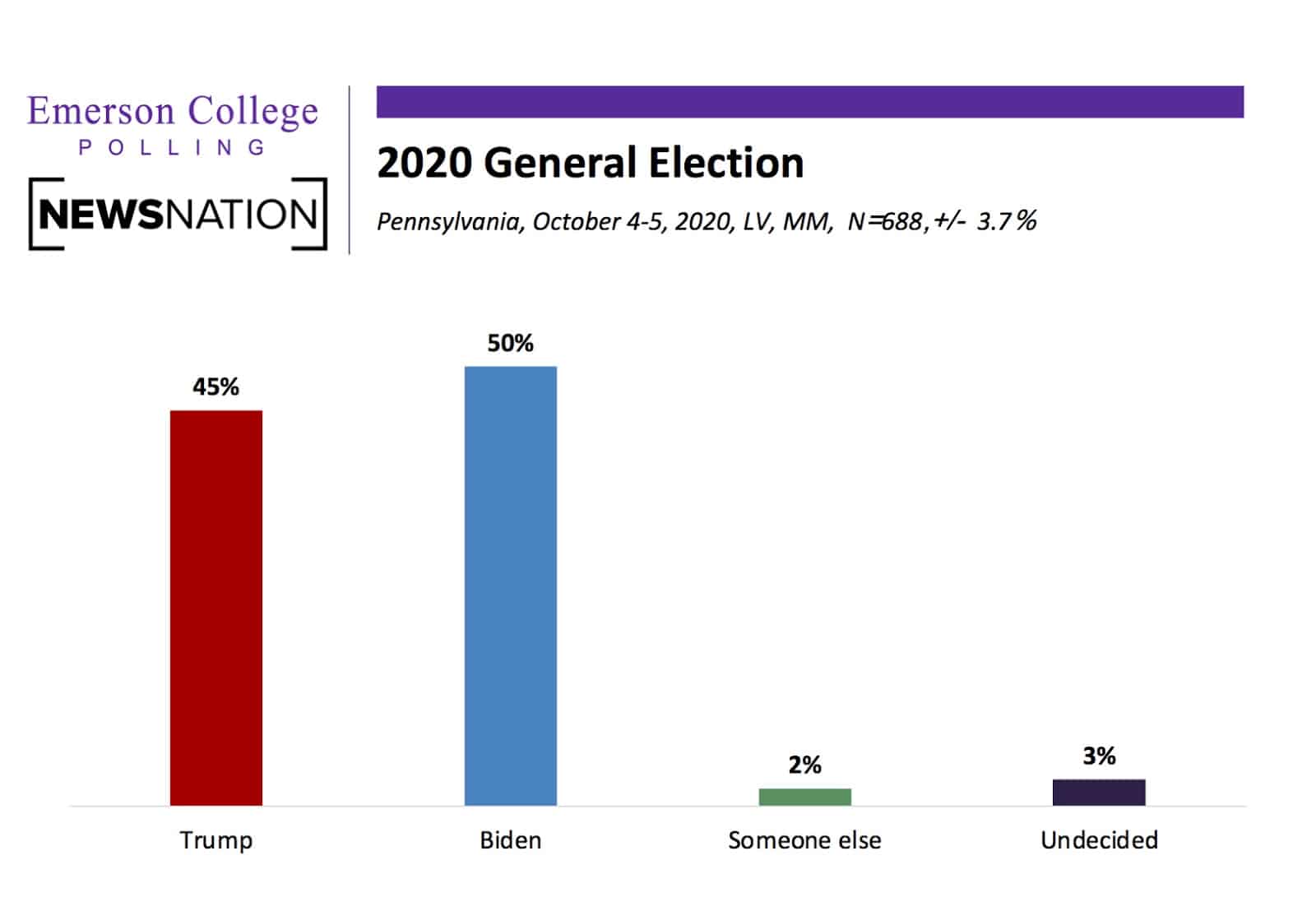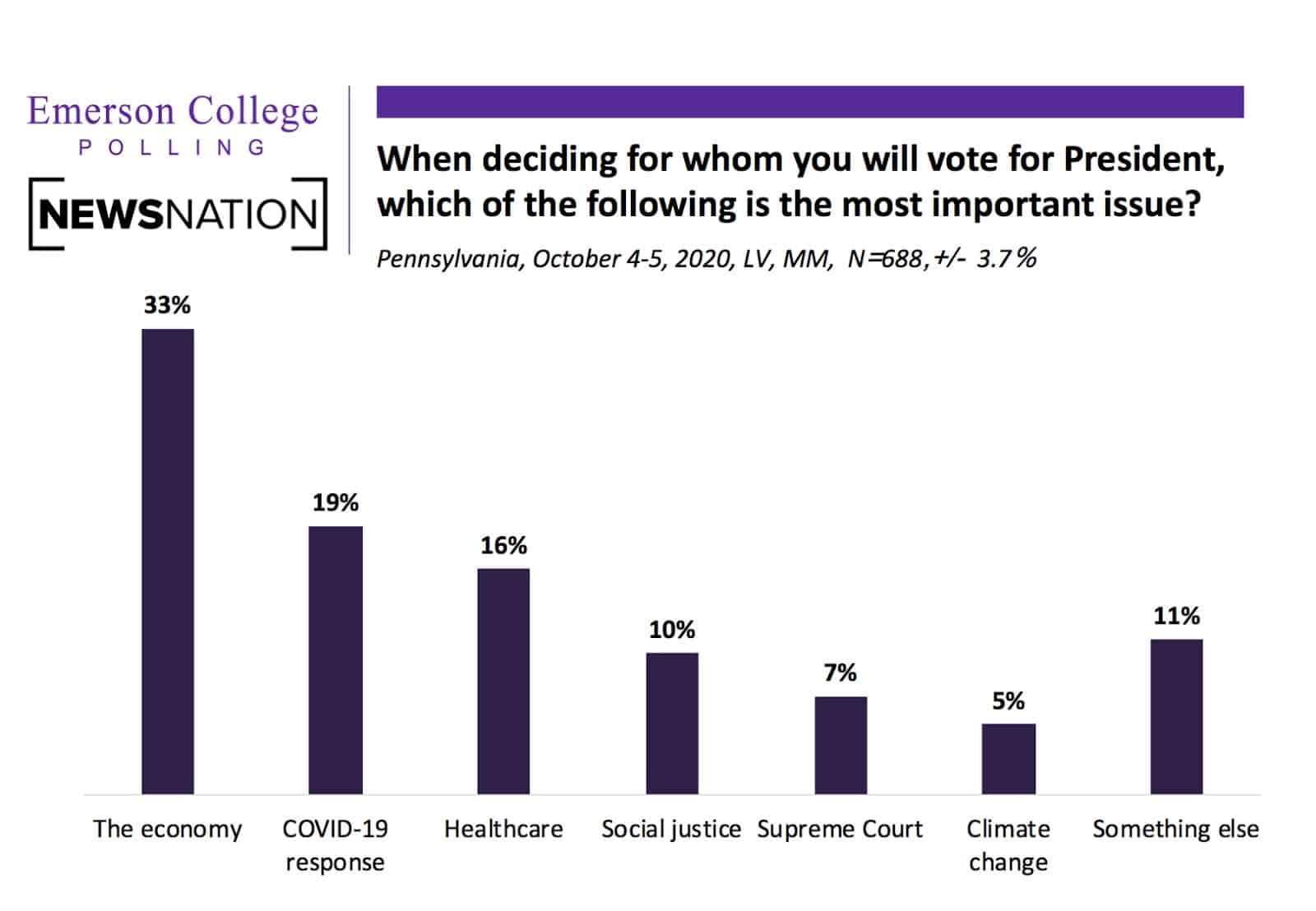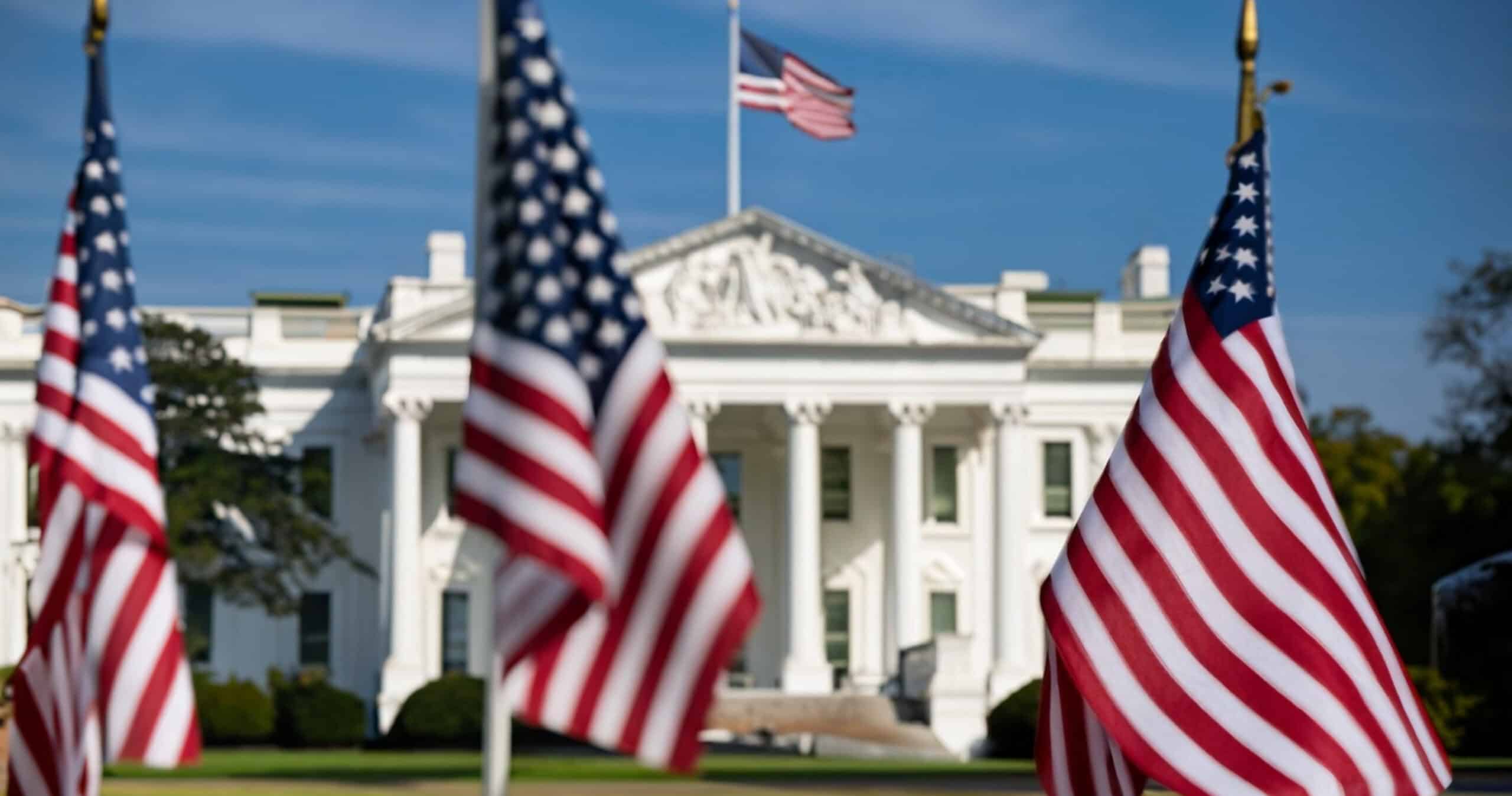The latest Emerson College/NewsNation poll of Pennsylvania voters finds former Vice President Joe Biden with a 5-point lead over President Trump, 50% to 45%. Three percent (3%) of voters are still undecided, and 2% plan to vote for another candidate. Biden’s lead has tightened since the last Emerson poll in Pennsylvania this August, as he led Trump by 9 points at that point in the race.
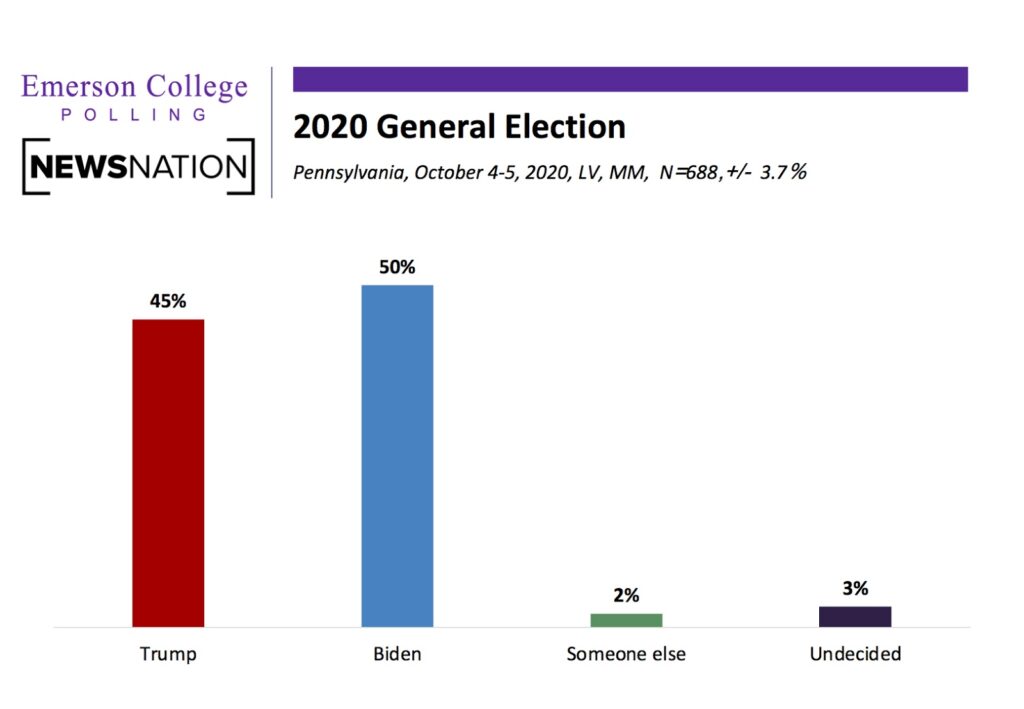
Pennsylvania voters are evenly split regarding who they expect to win the November election, with 50% believing Trump will be re-elected and 50% saying Biden will win.
The economy ranks as the most important issue for Pennsylvania voters this November, with 33% selecting it as their top choice. Nineteen percent (19%) of voters say the candidate’s COVID-19 response is the most important in determining their vote, while 16% say healthcare. Among Trump voters, a majority (57%) say the economy is the most important issue, followed by 10% who say the Supreme Court factors most into their vote. Among Biden voters, the COVID-19 response ranks as the most important issue among 31% of voters, followed by healthcare (23%) and social justice (17%).
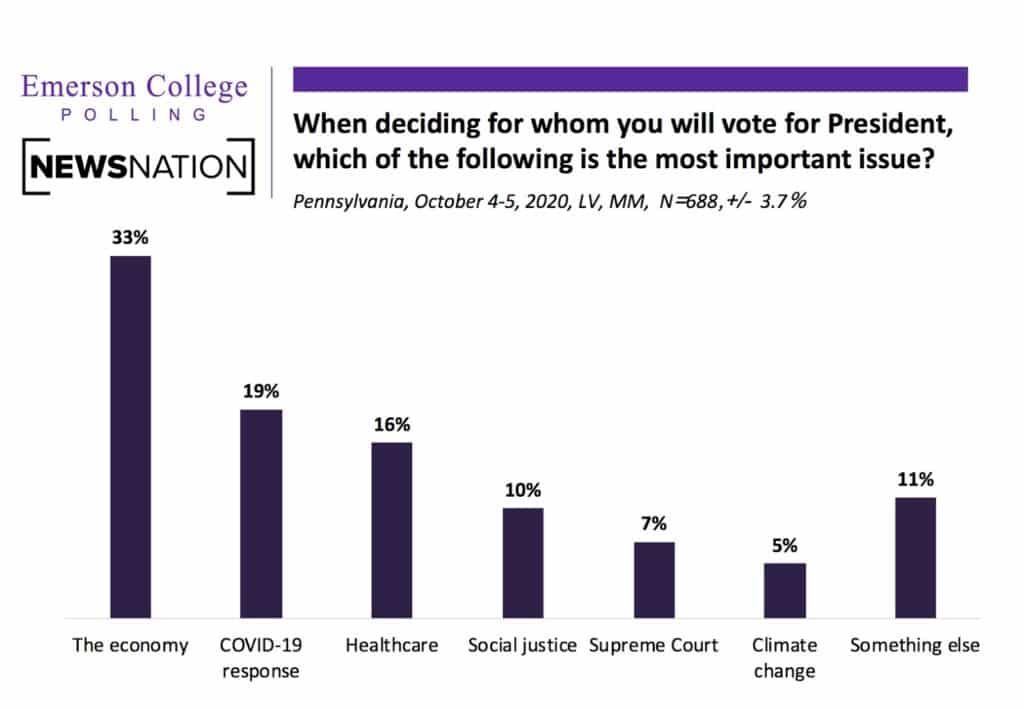
President Trump’s job approval is underwater in the state, with 44% approval and 52% disapproval. This is a 2 point increase for Trump, who was at 42% approval among Pennsylvania voters in August.
When asked how much of a threat to public health COVID-19 is in the United States, a majority (50%) of Pennsylvania voters consider it a major threat. Thirty-two percent (32%) consider it a moderate threat, 15% say it is a minor threat, and 3% say it is not a threat at all. Among Joe Biden supporters, 84% think Coronavirus is a major threat and 15% said it was a moderate threat, compared to 15% of President Trump supporters who said it was a major threat, 49% a moderate threat, 30% a minor threat, and 7% think it is not a threat to public health.
Professor Spencer Kimball, Director of Emerson College Polling, notes that “we continue to see that about half of all voters rate COVID-19 as a major concern. Those voters are overwhelmingly breaking for Biden, while voters who think the virus is a moderate or minimal concern are breaking for Trump. In these last four weeks, both candidates can be expected to continue arguing about the impact of COVID, as this appears to be a major driver for who they will vote for.”
The majority (56%) of Pennsylvania voters think that Biden has a better national COVID-19 recovery plan, while 44% think President Trump does. However, regarding which candidate will make the country safer, the gap tightens, as 49% say Trump and 51% say Biden.
Regarding President Trump’s recent COVID-19 diagnosis, a majority (66%) say that it does not affect their voting decision, while 18% say it makes them less likely to vote for President Trump in November, and 16% say it makes them more likely.
A majority (74%) of Pennsylvania voters also are not influenced by Joe Biden being born in Scranton, while 13% say it makes them more likely to vote for Biden, and 14% say it makes them less likely.
The majority (57%) of Pennsylvania voters plan to vote in-person on election day and 43% say they plan to vote by mail. Among those planning to vote for President Trump, 81% plan to vote in person on election day and 19% plan to vote by mail compared to 64% of Joe Biden voters who plan to vote by mail and 36% plan to vote in person on election day.
The majority (63%) of Pennsylvania voters think the state should start to process mail-in ballots before election day to speed up vote counting, 21% think they should not and 16% were unsure.
Caller ID
The Pennsylvania Emerson College/NewsNation poll was conducted October 4-5, 2020. The sample consisted of likely Democratic, Republican, and Independent voters, n=688, with a Credibility Interval (CI) similar to a poll’s margin of error (MOE) of +/- 3.7 percentage points. The data sets were weighted by gender, age, and education based on 2016 voter turnout modeling. It is important to remember that subsets based on gender, age, party breakdown, ethnicity, and region carry with them higher margins of error, as the sample size is reduced. Data was collected using an Interactive Voice Response (IVR) system of landlines (n=316), SMS-to-web texting (n=81) and an online panel provided by MTurk (n=291).




